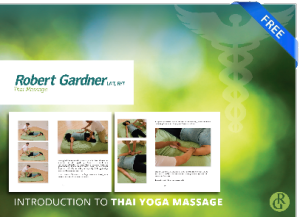In looking at what I do for work and how I approach healing I find myself at odds with the status quo. Over time I just step aside, I certainly hold less resentment and anger but my compassion grows by leaps and bounds. As a friend and I had a discussion about our mutual love for healing work we admitted to each other that we’re good at what we do because we’ve been broken. A healer is good at working on something they themselves have overcome. In blues terms, “you gotta pay your dues to play the blues.”
My strong empathic sense of people, their emotions and mental states leaves me in places where I remind myself that client’s stuff is theirs. I need not take on their emotions, feelings and mental states to aid their healing process. The more I heal the more empathy and compassion I have for those who suffer. Some suffering is what life places on the doorstep but most comes from ignorance. Ignorance causes more suffering than anything else. It’s not what others do to us, it’s what we do to ourselves.
It’s one thing if someone tells us we’re fat as a kid, teases us. It’s another when you somehow take that on as a part of your sense of self, “I’m fat” you tell yourself. That person may have teased you once but you carry that burden with you, inflicting it on yourself 100’s of times beyond what that one person said. If you remove your part in the game, it’s just someone who made a mean comment. All that pain, all that suffering, vanquished. The veil of ignorance is removed.
Things happen. I’m not immune to suffering on the mental, psychological or physical plane. I no longer wish to believe that this is simply the best I deserve. What if instead of believing I’m a dumb, incompetent, worthless, fat, lowly massage therapist I begin the process of changing those beliefs? What if I slowly work on myself until I decide on a heart level that I’m a worthwhile, strong, inquisitive, upright man who’s capable of anything he sets his mind to? I’m taking the latter road. If I seem confusing this may be why. My path is other that what the predominant culture provides.
A long term friend passed recently and while looking at her glowing beautiful daughter I told my friend, “that baby is the winner of 6 billion years of evolution.” This young girl is the biological product of intelligence refining the same stuff that stars are made of to produce life, human beings and a central nervous system. This child can look up at the stars and one day ponder that the universe is hers from her vantage point in the milky way galaxy.
Once the Dalai Lama had to stop a talk and discussion because he didn’t know an English word that was used. He said, “Self esteem? What is this self esteem you mention?” After someone explained to him what it meant, he grasped the chasm between his culture and our own. In what I believe was a compassionate moment he said, “We do not have this word in our language. We believe everyone has Buddha nature. We’ve no need to convince people that they have worth because we teach them that the highest potential is already within them, the potential for enlightenment.”
You think your pain, your suffering is fate, is genetic? You think you are encased in genetic code, dna? To a point this is true, you do hold a physical form. I also listen to teachers, tricksters and holy men who tell me you are not your thoughts. You are not your body. You are not what you think you are. Meditate and ask “who am I?” Who am I without my skin? Without my bones? Without a body? Without a mind? If you continue to peel away the layers what is left?
This process of awakening is something I’ve only scratched the surface of. My compassion turns toward myself, my own pain, my own suffering and forgiving myself for my shortcomings. I implore you to quit finding yourself to be garbage underfoot and realize that you are the sunshine that dispels the darkness. You are the crack that can let all of the light in. God can be seen through you, through your actions and through loving your neighbor as yourself.
Suffering is no more encoded in genetics than enlightenment is. The choice is yours.
“All this pain is an illusion.”~Parabol by Tool




